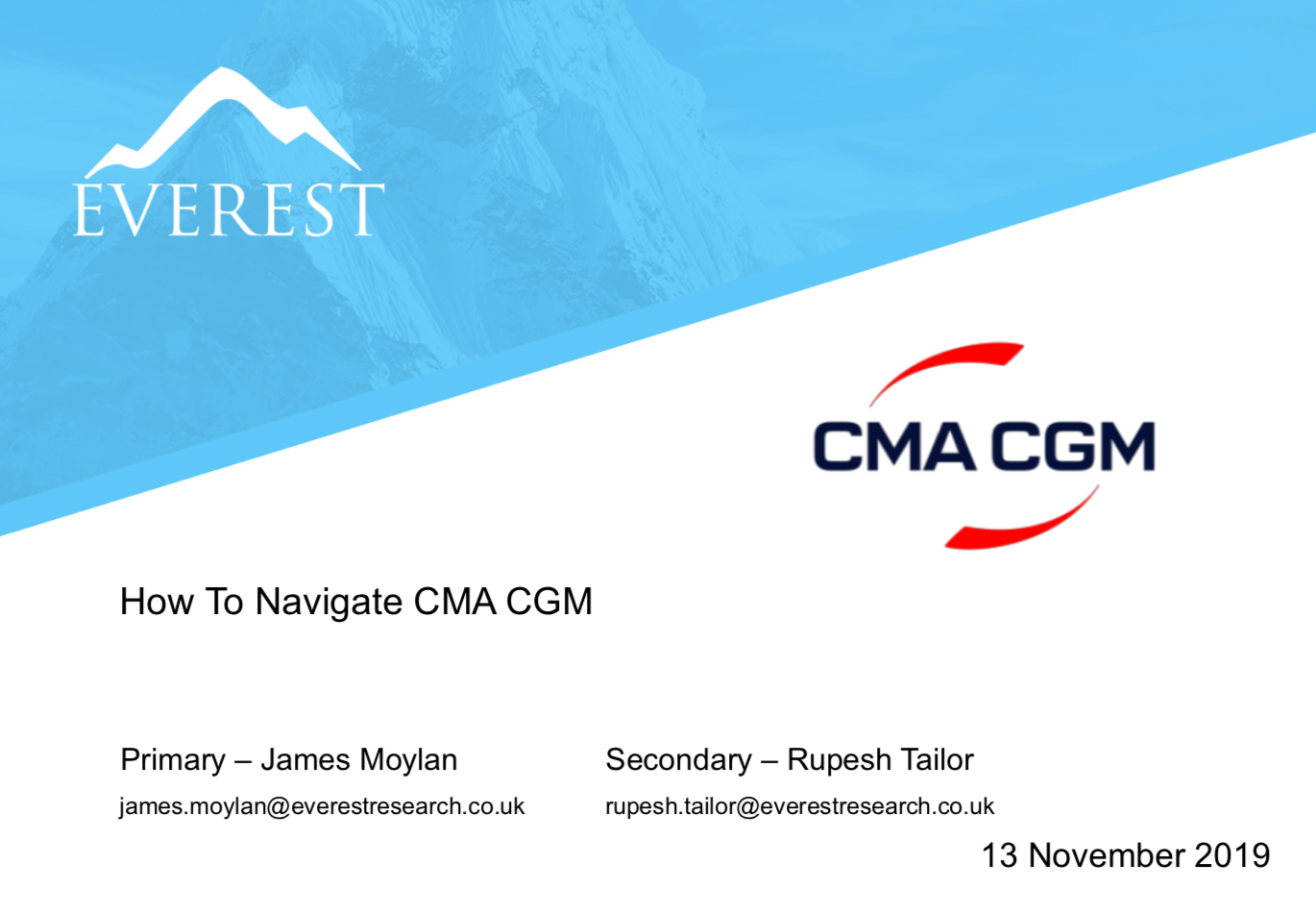Sectors > Transport & Logistics > CMA CGM Memo 131119
CMA CGM Memo 131119
CMA CGM. How To Navigate CMA CGM
PUBLISHED: 13 November 2019
PAGES: 141
PRODUCT CODE: CMACGM0001
SUBMARKET:
CMA CGM, Hema, Top Reports, Top Reports,
£2,670.00
Why Read?
- Understand how to look at valuation in the sector using a variety of valuation frameworks given differences in IFRS 16 capitalization of leases across firms and differences in adjusted net leverage measured under IFRS 16 vs IAS 17
- Understand CMA CGM’s sensitivity to Transpacific volumes and freight rates and consequently to the US – China trade war
- Understand the potential for CMA CGM to IPO and / or for Yildirim to sell its 24% stake in CMA CGM and provide a concrete data point on the equity cushion supporting senior unsecured bondholders
- Understand how cost savings and the CEVA acquisition have the potential to provide significant mitigation of trade war risks
- Understand the potential liquidity options available to CMA CGM and prospects for asset sales
- Understand container shipping and CMA’s competitive positioning within it
- Understand CMA’s valuation sensitivity to freight rates, volumes and bunker fuel cost
- Understanding CMA’s exposure to bunker fuel price fluctuations and the implications of IMO 2020
- Understanding the existing ownership structure and their commitment to the long term future of CMA
What’s New?
- Understanding what happened in CMA CGM’s previous debt restructurings and whether this time is different
- Deep dive on the relative importance of the Logistics business within CMA CGM
- Deep dive on performance metrics (cash flow analysis; EBITDAR / EBITDA / cash EBITDA margins through the cycle; fleet comparison) across the sector and in particular CMA CGM vs Maersk and Hapag Lloyd
- Deep dive on FCF and unleveraged FCF to understand cash generation capacity of CMA CGM and understand sector valuation
- Determine the ability of CMA CGM to continue operating in the absence of additional financing
- Valuation sensitivity analysis – understanding impact of working capital, volumes, freight rates and bunker fuel
Questions Answered
- CMA CGM has benefitted from a $1bn cost savings programme in 2017; the NOL acquisition in 2016 with IAS 17 Adj EBITDA of c. $0.3bn at the time plus $500m synergies targeted by 2018; the CEVA acquisition in 2019; and a further $1.2bn cost savings programme in 2019. Yet Adj EBITDA has not progressed. Where has the benefit gone?!
- If we stress [revenue minus operating expenses excluding leases] per TEU down to the levels of the difficult 2016 period, shock volume growth down to zero and revenue per TEU back towards all-time lows, can CMA CGM survive?
- How has CMA CGM’s debt been restructured in the past? If needed, would it be restructured in the same way again and how could this be complicated by a need for new money?
- Will Yildirim sell its 24% stake in CMA CGM, for what price and will there be an IPO?
- How big is the equity cushion protection senior unsecured bondholders? IFRS 16 EV / EBITDA peer multiples; IAS 17 lease-adjusted EV / EBITDAR peer multiples; transactions (including CMA CGM’s own acquisitions and investments by Yildirim and Bpi France into CMA CGM); Everest DCF
- What options does CMA CGM have to strengthen liquidity, particularly in the stress case?
- Why have CMA CGM’s cash EBITDA and cash EBITDAR margins gone from industry-leading to significantly squeezed since 2017 (relative to Hapag Lloyd and Maersk)
- How high could CEVA’s Adj EBITDA and transformation / synergies together with CMA CGM’s own $1.2bn cost savings programme take CMA CGM’s Adj EBITDA?
- Will CMA CGM be able to refinance its 2021 senior unsecured bonds?
- How much of an issue is the 2020 IMO regulation on low sulphur bunker fuel for CMA CGM?






